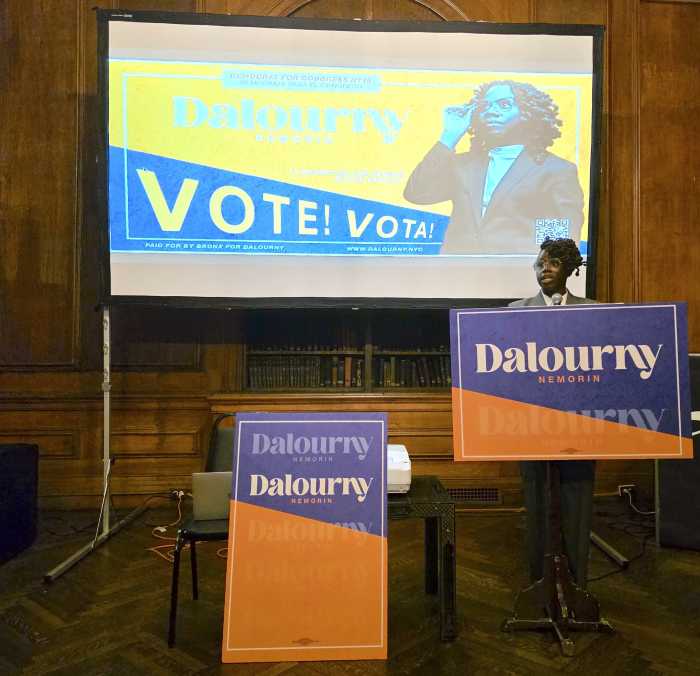The late choreographer and founder of the American Dance Theater, Alvin Ailey, used movement to reveal meaning. His modern style of dance is poetry in motion. His work is sinuous and sensuous. “Ailey” is director Jamila Wignot’s agile documentary on the influential choreographer that provides a celebratory portrait of the man, his work, and his legacy. On that last point, the film intersperses choreographer Rennie Harris rehearsing a piece honoring the company’s 60th anniversary.
Wignot uses archival clips of Ailey talking about his life, such as the sacrifices dancers make — physically, financially, and even in their relationships. He describes his arriving in New York, training under Martha Graham, and being a “rebel,” who “had his own ideas.”
“Ailey” also flashes back to his childhood in Texas during the 1930s and 1940s. He lived with his mother — he never saw his father — and had a friendship with Chauncey Green, with whom, Ailey implies, shared some intimate moments together. These recollections are spoken in poignant voice-overs as footage depicts Black youths playing in a field, or swimming, to represent the nostalgic times.
The visuals work best when Ailey explains that his memories of honkytonks informed his dance “Blue Suite” in 1958. The production garnered acclaim for him and his company, and scenes from a performance that are juxtaposed with footage from back in the day make the connection clear. Likewise, Ailey’s experiences in the church influenced his landmark 1960 piece, “Revelations,” and “Masekela Language,” in 1969, was a reaction to the murder of Fred Hampton and the rage and anger of Black men and women. His 1971 production, “Cry,” was a tribute to Black women like his mother, and “Memoria” in 1979 was for his late friend Joyce Tisler. The snippets from the performances of these various productions are welcome because they showcase Ailey’s vision and the graceful, fluid movement of his dances.
Ailey explains that as a youth, “dancing started to pull at me,” and while he was not keen on playing football in school, he excelled at gymnastics. He also admits that he didn’t dare tell anyone he wanted to be a dancer. The film does not need to explain why.
Wignot’s documentary, however, does skimp on showing how his career developed, even as it traces Ailey immersing himself in dance after seeing the Ballet Russes. When Ailey saw Katherine Dunham and other Black performers on stage, he was truly motivated. Ailey eventually studied under Lester Horton, but the film does not describe how Ailey passed on Horton’s technique to his dancers.
Many of the film’s interviewees are former members of his company, including Masazumi Chaya, George Faison, Sylvia Waters, Hope Clarke, and others. Their stories about Ailey provide shading for his life and work, but only rarely provide insight — as when Judith Jameson describes Ailey being both encouraging and exacting in rehearsals. Watching clips of Ailey at work choreographing are fascinating, and there is a powerful moment when company member Mary Barnett emphasizes how dance allowed her to express “I am” on stage.
However, too much of “Ailey” recounts experiences of the company on tour. An anecdote about a trip to Australia describes the troupe performing to a crowd of 25 people one night and a packed house the next. At a show in Germany, the attendees would not let the dancers leave, banging their shoes on the walls. These recollections reveal more about the reception to Ailey’s work than about Ailey himself. A story about finding a hotel on a road trip across America touches on the issues of race for this mixed-race dance company, but again, it feels slight.
Wignot’s film also does not discuss Ailey’s sexuality much. (Ailey was not forthcoming about his private life). Several interviewees talk about Ailey being alone much of the time. Ailey does recount one relationship, with a young man named Abdullah, whom he met in Paris and lived with briefly in New York, but that is the extent of his personal relationships. More attention — but still not very much — is given to the specter of AIDS, which took Ailey’s life in 1989.
“Ailey” does generate some real interest when Bill T. Jones, the subject of the recent (and superior) dance documentary “Can You Bring It,” raises a point about Ailey experiencing “imposter syndrome,” which might explain his workaholic nature. But this idea is raised and left hanging, not unlike an episode in Ailey’s life when he is institutionalized for mental health issues.
Ultimately, Wignot covers too much ground without enough depth. It is fabulous to see the performances and there are some nice candid moments — as when Ailey talks about hair with an off-screen interviewer. “Ailey” is certainly effusive about its subject, and the passion he sparked in his company — and his company members have for him — is clearly on display. However, viewers hoping for a more in-depth portrait will find this pleasant documentary lacking.
AILEY | Directed by Jamila Wignot. Opening July 23 at Film at Lincoln Center. Distributed by Neon

















